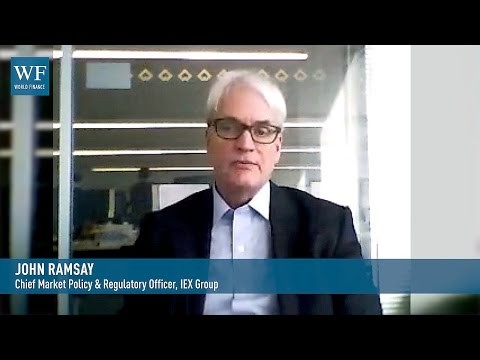IEX Welcomes HighSpeed Traders as Long as They Behave Bloomberg Business
Post on: 27 Май, 2015 No Comment

Traders on the floor of the New York Stock Exchange. Photographer: Scott Eells/Bloomberg
March 31 (Bloomberg) — IEX Group Inc.’s trading platform was built to combat predatory practices. That doesn’t mean it’s on a crusade to kill high-frequency trading firms.
Chief Executive Officer Brad Katsuyama, whose firm is the subject of Michael Lewis’s new book “Flash Boys,” welcomes all kinds of traders on his five-month-old platform that’s trying to reshape the $22 trillion U.S. equity market. Virtu Financial Inc. one of the biggest high-speed trading firms, trades on IEX, for instance.
“It’s not about being anti-HFT, but about being pro-fairness,” Katsuyama said during an interview today. “It would be easy for us to go after Virtu or an HFT firm because of the way we’re being shaded. But it’s not fair because although they are only a small percentage of our overall volume, they are a good contributor of value to our market.”
IEX aims to level the playing field for investors by curbing the pace of buying and selling — eliminating opportunities for the fastest firms to trade in front of slower ones. To avoid conflicts of interest, IEX doesn’t let brokers or traders such as Virtu own stakes. Only money managers such as Brandes Investment Partners, David Einhorn’s Greenlight Capital Inc. and Bill Ackman’s Pershing Square Capital Management LP are owners.
“There are HFT strategies that are beneficial to the market and create true liquidity,” said Joe Scafidi, the director of trading at money-management firm Brandes Investment Partners, which oversees $27 billion and owns an IEX stake. IEX is “not anti-HFT. It’s pro-efficient market.”
Rigged Market
Lewis told CBS Corp.’s “60 Minutes,” during an interview broadcast yesterday, that the U.S. equity market is rigged because the fastest traders are able to determine which stocks investors plan to buy, purchase them first and then sell them back at a higher price.
He’s adding his voice to an increasingly loud debate about high-frequency strategies. Earlier this month New York Attorney General Eric Schneiderman said he’s scrutinizing practices that give some computerized firms a speed edge, while regulators in Washington have also said the issue should be examined.
High-frequency trading comprises a diverse set of software-driven strategies that have spread from U.S. equity markets to most developed countries as computer power grew and regulators tried to break the grip of centralized exchanges. They usually employ super-fast computers to post and cancel orders at rates measured in thousandths or even millionths of a second to capture price discrepancies on more than 50 public and private venues that make up the American equities market.
Here Forever
Firms using the tactics account for about half of share volume in the U.S. a statistic that shows their pervasiveness and hints at the obstacles faced by proposals to rein them in. Exchanges rely on HFTs for profits as well as liquidity, with electronic market makers all but eliminating the old system of human floor traders who oversaw the buying and selling of equities. While critics such as Lewis see a Wall Street plot, proponents say the new system is faster and cheaper.
“We act on the assumption that computerized trading never goes away,” Katsuyama said. “It should be part of the market and it should be delivering the efficiencies that they deliver,” he added. “But should it be 50 percent of the market or greater? Probably not. It is an intermediary after all.”

Ronan Ryan, chief strategy officer at IEX, said he’s met with about 15 high-frequency trading firms in recent months to explain his company’s approach.
‘Fairly Well’
“We went along and said that while some of the press might give off the perception we’re anti-HFT, we’re not, we’re pro-technology,” he said. “I’d say the meetings went fairly well. At the beginning they weren’t that receptive, they were a little bit skeptical about our speed bump, that’s all they knew it to be. But when they went through our architecture, a lot of them said, ‘You’ve thought this through, I like the architecture.’”
Several of these firms asked for a backdoor into IEX — a way to circumvent IEX’s design to their own benefit.
“They weren’t joking,” said Ryan, who declined to name the firms or say what they asked for. “They literally felt it was a legitimate question because for years they’ve been granted that type of special treatment.”
To contact the reporter on this story: Sam Mamudi in New York at smamudi@bloomberg.net
To contact the editors responsible for this story: Nick Baker at nbaker7@bloomberg.net Michael P. Regan














